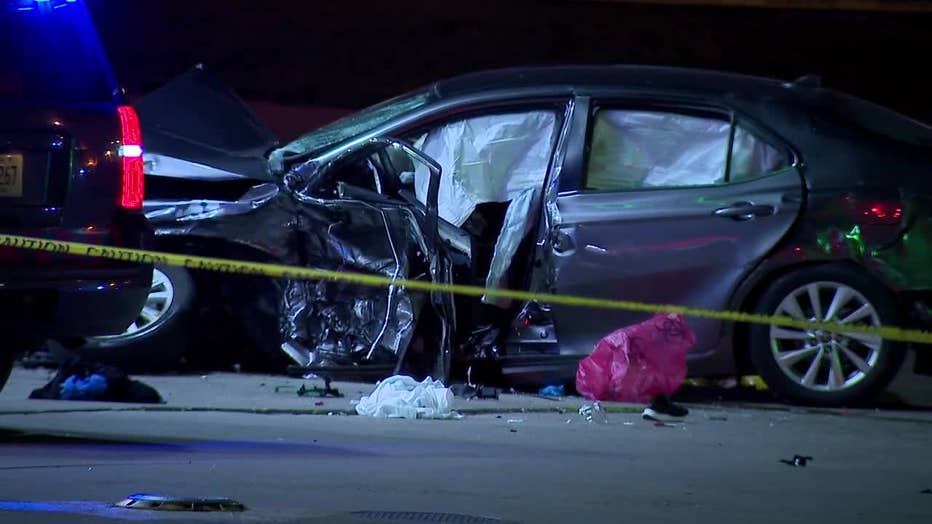Milwaukee County traffic deaths increased, rest of Wisconsin dropped

Milwaukee County traffic deaths increasing
While the rest of the state of Wisconsin is seeing fewer traffic deaths, it's increasing for Milwaukee County.
MILWAUKEE - Milwaukee County is on the wrong side of the road compared to the rest of Wisconsin when it comes to traffic fatalities.
On Tuesday night, the sheriff's office said a car sped away from a traffic stop and sparked a pursuit. It ended with a fatal crash.
"It’s really like a movie. Everything just slowed down," said crash survivor Drew Jefferson.
SIGN UP TODAY: Get daily headlines, breaking news emails from FOX6 News
The 24-year-old driver sped across the 27th Street Viaduct and ran a red light at St. Paul, the sheriff's office said.
"His car turned and just straight beelined, and just nailed me right here, and knocked me against the pole," Jefferson said.

Scene of crash near 27th and St. Paul
The crash killed a 69-year-old man and injured a 65-year-old woman. The fleeing driver was hurt, too.
It was the latest in a line of traffic fatalities in Wisconsin, but it points to the ongoing problem and how Milwaukee County is an outlier. The Wisconsin Policy Forum (WPF) looked at numbers from across the state.
"This divergence – Milwaukee County and the rest of the state – kept cropping up," said WPF's Mark Sommerhauser.
FREE DOWNLOAD: Get breaking news alerts in the FOX6 News app for iOS or Android.
From 2002 through 2022, WPF said 71 counties saw a 36% decline in fatalities – but Milwaukee County saw a 113% increase over that same time. And that was while white Wisconsinite death rates declined, which was not so for Black or Hispanic residents.
"That's one that we're going to be watching going forward," Sommerhauser said.
The Wisconsin Policy Forum said it’s not surprising, as Milwaukee County is home to a majority of Wisconsin's Black residents and many Hispanic residents.
While speeding-involved crash fatalities declined by more than half (55.1%) in the rest of the state, Sommerhauser said: "More than 200% increase in the number of fatality crashes in Milwaukee County for which excessive speed was deemed to be a factor by law enforcement."
The hope is the data will help inform city and state leaders as they look to curtail crashes through the city's "Vision Zero" initiative or legalized red light cameras, and the public to put a stop to a problem that continues to claim lives.

